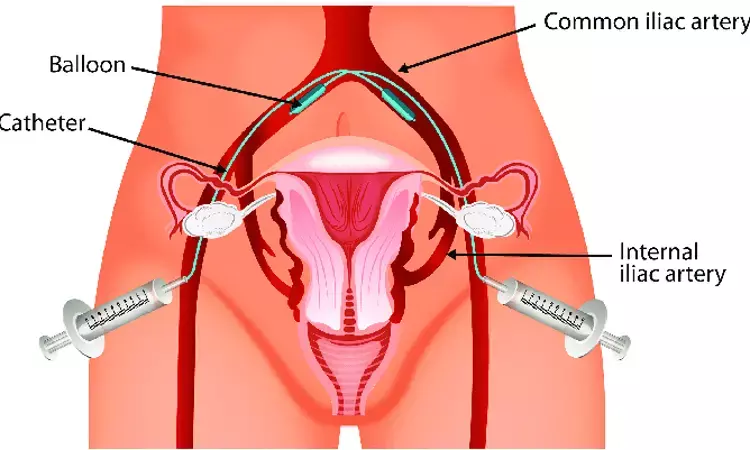- Home
- Medical news & Guidelines
- Anesthesiology
- Cardiology and CTVS
- Critical Care
- Dentistry
- Dermatology
- Diabetes and Endocrinology
- ENT
- Gastroenterology
- Medicine
- Nephrology
- Neurology
- Obstretics-Gynaecology
- Oncology
- Ophthalmology
- Orthopaedics
- Pediatrics-Neonatology
- Psychiatry
- Pulmonology
- Radiology
- Surgery
- Urology
- Laboratory Medicine
- Diet
- Nursing
- Paramedical
- Physiotherapy
- Health news
- Fact Check
- Bone Health Fact Check
- Brain Health Fact Check
- Cancer Related Fact Check
- Child Care Fact Check
- Dental and oral health fact check
- Diabetes and metabolic health fact check
- Diet and Nutrition Fact Check
- Eye and ENT Care Fact Check
- Fitness fact check
- Gut health fact check
- Heart health fact check
- Kidney health fact check
- Medical education fact check
- Men's health fact check
- Respiratory fact check
- Skin and hair care fact check
- Vaccine and Immunization fact check
- Women's health fact check
- AYUSH
- State News
- Andaman and Nicobar Islands
- Andhra Pradesh
- Arunachal Pradesh
- Assam
- Bihar
- Chandigarh
- Chattisgarh
- Dadra and Nagar Haveli
- Daman and Diu
- Delhi
- Goa
- Gujarat
- Haryana
- Himachal Pradesh
- Jammu & Kashmir
- Jharkhand
- Karnataka
- Kerala
- Ladakh
- Lakshadweep
- Madhya Pradesh
- Maharashtra
- Manipur
- Meghalaya
- Mizoram
- Nagaland
- Odisha
- Puducherry
- Punjab
- Rajasthan
- Sikkim
- Tamil Nadu
- Telangana
- Tripura
- Uttar Pradesh
- Uttrakhand
- West Bengal
- Medical Education
- Industry
Supervised exercise as good as surgery for intermittent claudication due to iliac artery obstruction

Both a strategy of primary supervised exercise therapy and primary endovascular revascularisation improve maximum walking distance on a treadmill and disease specific Qol of patients with intermittent claudication due to iliac artery obstruction, according to a recent study published in the European Journal of Vascular and Endovascular Surgery
International guidelines recommend supervised exercise therapy (SET) as primary treatment for all patients with intermittent claudication (IC), yet primary endovascular revascularisation (ER) might be more effective in patients with iliac artery obstruction.
This was a multicentre RCT including patients with intermittent claudication (IC) caused by iliac artery stenosis or occlusion (NCT01385774). Patients were allocated randomly to supervised exercise therapy (SET) or endovascular revascularisation (ER) stratified for maximum walking distance (MWD) and concomitant SFA disease. Primary endpoints were maximum walking distance (MWD) on a treadmill (3.2 km/h, 10% incline) and disease specific quality of life (VascuQol) after one year. Additional interventions during a mean follow up of 5.5 years were recorded.
The results of the study are:
- Between November 2010 and May 2015, 114 patients were allocated to supervised exercise therapy (SET), and 126 to endovascular revascularisation (ER). The trial was terminated prematurely after 240 patients were included.
- Compliance with supervised exercise therapy (SET) was 57/114 (50%) after six months.
- Ten patients allocated to endovascular revascularisation (ER) (8%) did not receive this intervention. One year follow up was complete for 90/114 (79%) supervised exercise therapy (SET) patients and for 104/126 (83%) endovascular revascularisation (ER) patients.
- The mean maximum walking distance (MWD) improved from 187 to 561 m in SET patients and from 196 to 574 m in endovascular revascularisation (ER) patients (p = .69). VascuQol sumscore improved from 4.24 to 5.58 in SET patients, and from 4.28 to 5.88 in ER patients (p = .048). Some 33/114 (29%) supervised exercise therapy (SET) patients had an endovascular revascularisation (ER) within one year, and 2/114 (2%) surgical revascularisation (SR). Some 10/126 (8%) ER patients had additional endovascular revascularisation (ER) within one year and 10/126 (8%) surgical revascularisation (SR).
- After a mean of 5.5 years, 49% of supervised exercise therapy (SET) patients and 27% of endovascular revascularisation (ER) patients underwent an additional intervention for intermittent claudication (IC).
Thus, taking into account the many limitations of the SUPER study, both a strategy of primary supervised exercise therapy (SET) and primary endovascular revascularisation (ER) improve maximum walking distance (MWD) on a treadmill and disease specific Qol of patients with intermittent claudication (IC)caused by an iliac artery obstruction. It seems reasonable to start with supervised exercise therapy (SET) in these patients and accept a 30% failure rate, which, of course, must be discussed with the patient. Patients continue to have interventions beyond one year.
Reference:
Editor's Choice – Randomised Clinical Trial of Supervised Exercise Therapy vs. Endovascular Revascularisation for Intermittent Claudication Caused by Iliac Artery Obstruction: The SUPER study by Mark J.W. Koelemay et al. published in the European Journal of Vascular and Endovascular Surgery.
DOI: https://doi.org/10.1016/j.ejvs.2021.09.042
Dr. Shravani Dali has completed her BDS from Pravara institute of medical sciences, loni. Following which she extensively worked in the healthcare sector for 2+ years. She has been actively involved in writing blogs in field of health and wellness. Currently she is pursuing her Masters of public health-health administration from Tata institute of social sciences. She can be contacted at editorial@medicaldialogues.in.
Dr Kamal Kant Kohli-MBBS, DTCD- a chest specialist with more than 30 years of practice and a flair for writing clinical articles, Dr Kamal Kant Kohli joined Medical Dialogues as a Chief Editor of Medical News. Besides writing articles, as an editor, he proofreads and verifies all the medical content published on Medical Dialogues including those coming from journals, studies,medical conferences,guidelines etc. Email: drkohli@medicaldialogues.in. Contact no. 011-43720751


